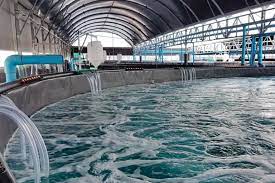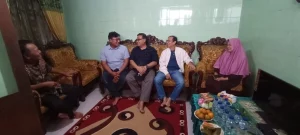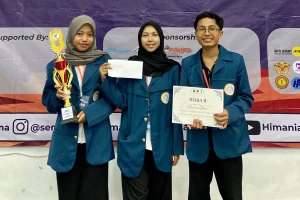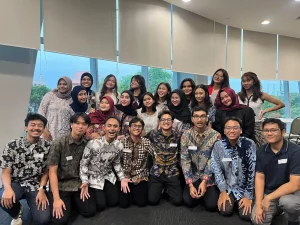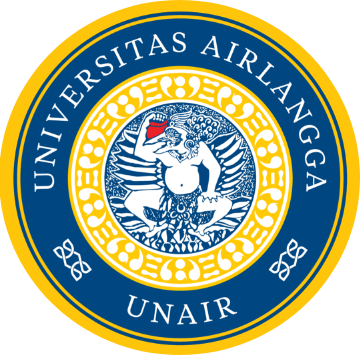Indonesia is an archipelagic state with a high potential for fishery resources. The estimated potential of fishery resources in 2017 was more than 12 million tonnes. The number of potential fishery resources in Indonesia continued to increase from 1997 to 2017 (Maritime and Fisheries Affairs Ministry, 2018). However, according to the Ministerial Decree of Maritime and Fisheries Affairs of the Republic Indonesia Number 50/Kempen-KP/2017 concerning Potential Estimation, Total Allowable Catches and Utilization Rates of Fishery Resources in the Fisheries Management Area of Indonesia (MMFA Decree No. 50 of 2017), several species have been over-exploited. This was caused by several factors, including the high number of illegal, unreported, and unregulated fishing (IUU fishing) crimes in Indonesian waters, the disproportionate number of fishing vessels in each Fisheries Management Area of Indonesia (FMAI), and weak supervision of overfishing activities. IUU fishing is a serious problem in Indonesia because of its economic and environmental impact. Within the current literature, some studies examine the technical protection of fish resources through the supervision of fishery activities (Fikri, 2013). Some studies focus on the protection of endangered fishery resources through conservation (Pramoda and Koeshendrajana, 2012). However, this paper examines the protection of traded fishery resources by examining the strengths and weaknesses of the TACs system that has been implemented in Indonesia to find a better legal mechanism that not only maintains the sustainability of fish resources but also prevents inequality in fishing activities.
Tacs Determination History
In 1985, the Minister of Agriculture determined TACs in Indonesia’s Exclusive Economic Zone through the Minister of Agriculture Decree Number 473a/Kpts/IK.250/6/1985 concerning Determination of TACs in the Indonesian Exclusive Economic Zone (the Minister of Agriculture Decree No. 473a of 1985). In 1999, the Minister of Agriculture determined TACs through the Minister of Agriculture Decree Number 995/Kpts/lK210/9/99 concerning Fishery Resources Potential Estimation and TACs in Indonesian Waters (the Minister of Agriculture Decree No. 995/1999). In 2011, the Minister of Maritime and Fisheries Affairs determined the estimation of fishery resources potential in each FMAI and utilisation rates by issuing the Minister of Marine and Fisheries Affairs Decree Number KEP.45/MEN/2011 (MMFA Decree No. KEP.45/MEN/2011) concerning Potential Estimation and Utilization Rates in FMAI. Indonesia did not determine TACs in 2011. In 2016, the Minister of Marine and Fisheries Affairs determined TACs for certain fish species throughout FMAIs by issuing the Minister of Marine and Fisheries Affairs Decree Number 47/ Kempen-KP/2016 concerning Potential Estimation, TACs, and Utilization Rates in FMAIs (MMFA Decree No. 47 of 2016). In MMFA Decree No. 47 of 2016, the Minister determined TACs in each FMAI and stipulated the utilisation rate for each fish species in each FMAI. The utilisation rate shows the status of each fish species in each FMAI as moderate, fully-exploited, or over-exploited.
The Tacs System In Indonesia
Another impact of the TACs implementation is the creation or exacerbation of inequality in the fisheries sector. This is because Indonesia has set TACs without the determination of the fishing rights allocation. Fishing vessels measuring 30GT to 100GT will be in the same zone as vessels over 100GT. Fishing vessels measuring 30GT can catch up to 4 tonnes of fish in one trip. Fishing vessels measuring >70GT annually can produce a catch of 1,000 to 2,000 tonnes. The difference in fishing ability between fishing vessels measuring >30GT to 100GT and large vessels measuring over 100GT is significant. FISHING RIGHTS ALLOCATION The allocation of fishing rights in the form of a fishing quota was first introduced by the Netherlands in 1976. In 1986 New Zealand had a fishing quota regulation (Newell et al., 2002). Individual fishing quotas are one form of allocation of fishing rights and are an increasingly popular mechanism used for fisheries management (Thébaud et al., 2015). Fishing quotas are often discussed as an effective policy instrument to increase the profitability of the fishing industry, reduce industrial overcapacity, and promote sustainable fisheries management (Stage et al., 2016). States that have regulations regarding individual fishing quotas are Australia, Canada, Iceland, Italy, Netherlands, and South Africa. As of this writing, Indonesia does not have regulations regarding individual fishing quotas.
Individual Non-Transferable Quotas In Indonesia
The kind of fishing quota that Indonesia should consider is different from the ITQ concept. As the name implies, ITQs are transferable, either by trading or leasing. The kind of fishing quota that Indonesia should enact is the Individual Non-Transferable Quota (INTQ). INTQs are in principle the same as ITQs that provide a quota for each fisherman for a certain fish species and a certain period; the difference between the two is that INTQs are non-transferable, either through buying or selling, or leasing. INTQs can be determined by dividing the TACs’ value by the total number of fishermen. Another way that can be done is to determine ITQs by dividing the TACs by the total number of fishing vessels. This second method does have a potential complication: when a vessel is sold to another party, there will be a question as to whether the fishing quota attached to the vessel also moves to the new owner. This problem would not arise when the new owner is also an Indonesian citizen but should be considered when the new owner is a foreign citizen or foreign company.
Conclusions
The application of TACs is not effective enough to overcome the problem of over-fishing that occurs in each FMAI. Determination of INTQs is required as an effort to ensure the sustainability of fishery resources in Indonesian waters. Another advantage of determining INTQs is that it can prevent inequity in fishing activities and can create working partnerships between fish processing corporations and small-scale fishermen. The Indonesian government makes regulations for determining INTQs that are supported by discard ban regulations. Regulatory changes that have been made should be accompanied by good and serious supervision. The implementation of the INTQs system must be supervised so that the objectives of determining INTQs can be achieved.
Penulis : Enny Narwati
Narwati, E. and Kumala, M.T. (2023): Determination of Fishing Rights Allocation as a Strategy for Sustainable Fisheries Management Realisation in Indonesia. World Journal of Entrepreneurship, Management and Sustainable Development, Vol. 19, No. 1/2, pp. 27–38.


